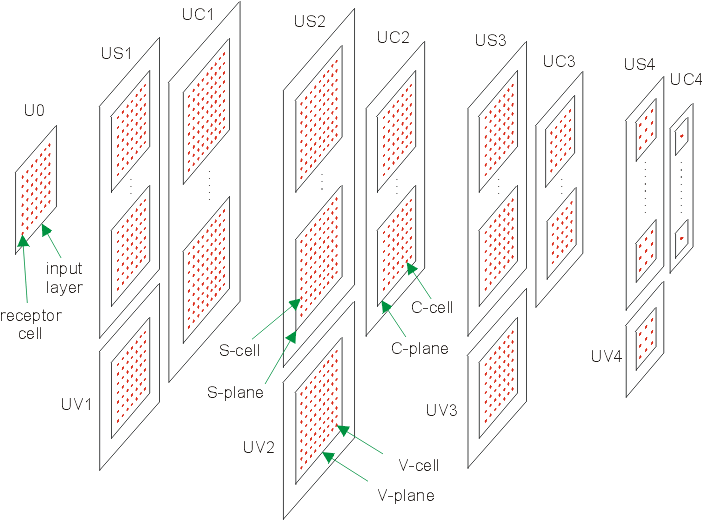 |
| Fig. 7.1 - Network structure - Cells |
Now we have come to the ground of the neocognitron which is cell. The neocognitron is made of large amount of cells of several distinct types which are organized in cell planes, layers and stages. All the cells, regardless of their type, process and generate analog values.
From figure 7.1 it is obvious that each S-plane, V-plane, C-plane and input layer consists of array of cells of the certain type.
Size of cell arrays is the same for all cell planes in one layer and it decreases with increasing of the network stage. Each C-plane in the highest stage of the network contains only one cell. Its output value indicates a measure of belonging of presented pattern into the category represented by this cell. Size of cell array in each V-plane is the same as size of cell arrays in S-planes in the same stage of the network.
 |
| Fig. 7.1 - Network structure - Cells |
From figure 7.1 it is obvious that four types of cells exist in the neocognitron - receptor cells, S-cells, V-cells and C-cells.
On the following pages we will explain V-cell, S-cell and C-cell function in detail.